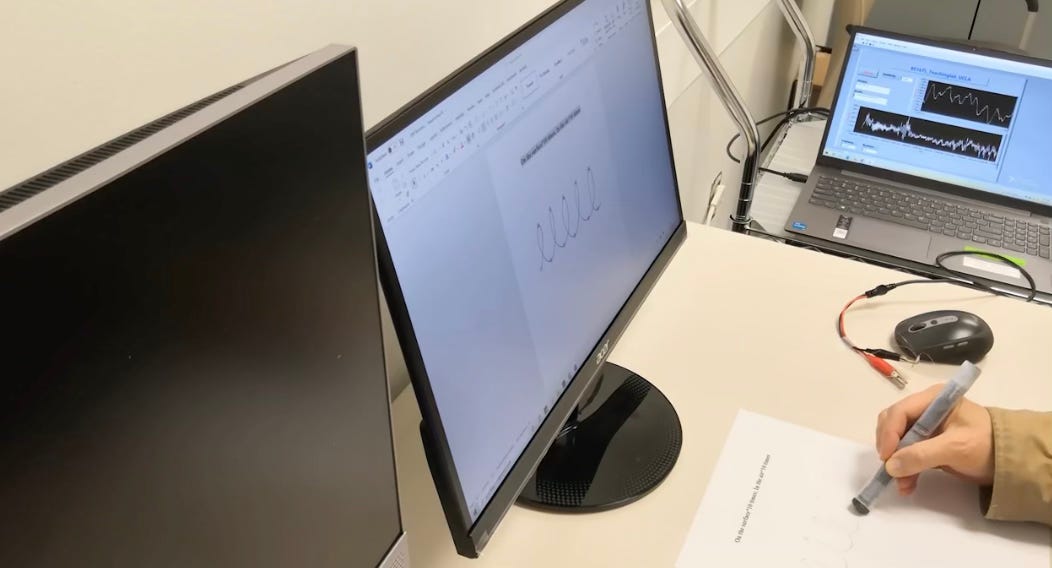This week we discover a new manufacturing method that makes the painkiller, acetaminophen from waste PET plastic. We consider if the days are actually getting shorter or if it just feels that way. We investigate a new pen that can provide early Parkinson’s disease diagnoses. Finally we examine the Mummy’s Curse and see how modern science is turning the curse into good.
Plastic Painkiller
A team from the University of Edinburgh have used Escherichia coli (E. coli) bacteria to convert molecules from PET plastic into the painkiller acetaminophen (marketed as paracetamol). Currently acetaminophen is made from fossil fuels.
PET bottles are chemically degraded and the resulting molecules are fed to engineered E. coli. The E. coli uses phosphate as the catalyst to convert the molecules into an organic compound containing nitrogen. These compounds can be turned into the active ingredient of acetaminophen.
The process can be completed within 24 hours at room temperature in a compact laboratory. The team was able to achieve a 92% yield from the process. An estimated 350 million tons of PET plastic waste are created each year. The team is working on other types of bacteria and other types of plastic using the same approach. More drugs may also be able to be manufactured using waste plastic.
Do the Days Seem Shorter?
If you have had a recent feeling that the days are starting to get shorter then you are not only extremely perceptive, you are correct. July 9 was predicted to be 1.30 milliseconds shorter than July 8. July 22 is predicted to be 1.38 milliseconds shorter and August 5, 1.5 milliseconds shorter than a usual day.
The speed of the Earth’s rotation and thus the number of days in a year has varied significantly over time. Currently it rotates 365 times per lap of the sun. Astronomers have estimated that the number of days during each lap of the sun has varied between 490 days to the current 365 days. The faster the rotation of the Earth the more days in a year. Over time the days had been getting longer as the Earth’s rotation has slowed. Since 1972, 27 leap seconds have been added to our clocks. The days were slowly getting longer. However unexpectedly in 2020 the Earth started speeding up again.
A range of factors affect the speed of rotation of the earth. The main one being the closeness of the moon. The moon is slowly moving away from us causing a slowing of rotation. Other factors include the overall sea levels, changes in the distribution of mass (melting of ice into sea water), seismic activity, atmospheric and ocean movements and the Earth’s Core Dynamics.
In March 2011 the earthquake off the coast of Japan shifted the Earth’s axis by about 6.5 inches and shortened the days. It is thought that the main island of Japan moved about 2.4 meters. The earthquake may have moved the mass of the Earth on average closer to the Earth’s rotation axis thus speeding up the Earth. The earthquake sped up days by 1.8 microseconds. The 2004 Indonesian earthquake sped up the rotation by 2.68 microseconds.
The cause of the current acceleration is not certain however it is thought to be something inside the earth. Ocean and atmospheric models do not explain the change. In the meantime enjoy these very slightly shortened days.
A Pen to Diagnose Parkinson’s
One of the issues with degenerative diseases such as Parkinson’s, is that significant damage is already done prior to major symptoms becoming obvious. Many times half of the dopamine producing neurons can be lost by the time patients are diagnosed.
Existing tests include identifying cell loss in the brain and inflammatory biomarkers in the blood. These tests are specialized and require expensive equipment and specialist knowledge.
A team at UCLA have developed a simple, smart, self powered magneto elastic pen that can help detect Parkinson’s early by analyzing handwriting. The pen has a soft silicon magneto elastic tip and ferrofluid ink. This ink contains magnetic particles.
When the pen’s tip is pressed against a surface or moved in the air, the pen converts both on surface and in air writing motions into high fidelity, quantifiable signals via a coil of conductive yarn wrapped around the pen’s barrel. The pen is self powered and leverages changes in the magnetic properties of its tip and the dynamic flow of the ferrofluid ink to generate data.
The pen is an affordable, reliable and accessible tool that is sensitive enough to pick up subtle movements and can be used across large populations and in resource limited areas. It is hoped that primary care physicians could administer a quick handwriting test during routine visits and use the data for early referral for specialist diagnosis.
The Mummy’s Curse
The Mummy’s Curse also known as the Curse of the Pharaohs is the belief that anyone that disturbs the tomb of an Egyptian Pharaoh will suffer bad luck, illness and potentially death. In the 1920’s a number of workers on the excavation team that uncovered King Tutankhamen’s tomb died from unexplained causes. In the 1970’s 10 of 12 scientists that entered the tomb of 15th Century Polish King Casimir IV died unexpectedly. Fungal spores were suspected in all these deaths and the fungus Aspergillus flavus was identified in the Polish tomb.
This fungus is now making a comeback however not as a promise of death but as a very effective cancer fighting drug. A team at University of Pennsylvania have identified a new molecule found in the fungus. This allowed the researchers to create a compound that is as effective as FDA approved leukemia drugs.
The molecules involved are ribosomal synthesized and post transitionally modified peptides (RiPPs). The molecules are assembled by the ribosome (which makes proteins) and later modified by enzymes. These molecules conduct many different biological activities some of which fight cancer.
The team was able to isolate four A. flavus RiPPs with a structure of interlocking rings. Two of the four molecules performed well against human leukemia cells without requiring any modification.
When mixed with a lipid another RiPP variant performed as well as the FDA approved leukemia drugs. By turning certain genes on and off the team discovered that a certain gene that acts as a gateway to allow certain molecules into the cell. This gives us another tool for future drug development.
The research opens the way for future fungal based medicines. It appears that the expeditions into the Pharaoh’s tombs not only gave us an insight into history, they may have also opened a door to future cancer treatments.
Paying it Forward
If you have a start-up or know of a start-up that has a product ready for market please let me know. I would be happy to have a look and feature the startup in this newsletter. Also if any startups need introductions please get in touch and I will help where I can.
If you have any questions or comments please comment below.
I would also appreciate it if you could forward this newsletter to anyone that you think might be interested or provide a recommendation on Substack.






